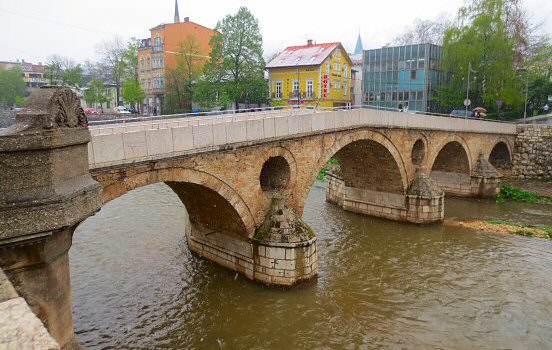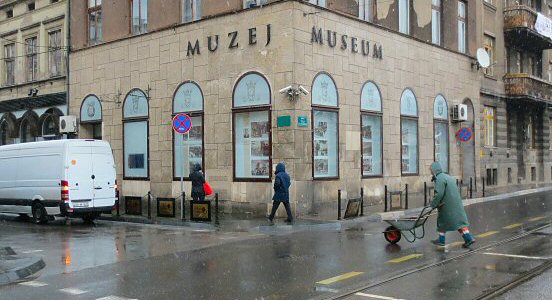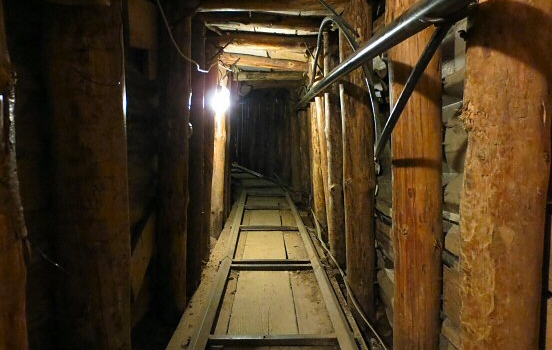Sarajevo isn’t just a dot on the map. It’s a scar that never quite healed, a city with a haunted stare, war stories and a deeper sense of what it means to survive.
As I stand in the center of Sarajevo, it is hard to imagine the terrible things that the capital of Bosnia and Herzegovina has seen.
 Latin Bridge in Sarajevo.
Latin Bridge in Sarajevo.
One of the most well-known tragedies is the assassination of Archduke Frans Ferdinand in 1914, which was the starting point of the first World War. I walk across the Latin Bridge straddling the Miljacka river, and stand on the spot where Serbian nationalist Gavrilo Princip fired the gunshot at the car, exactly 100 years ago. I look at the street crossing and wonder what thoughts went through the teenage Princip, seconds before his action that would literally be the starting gun that plunged Europe into a downward spiral and ultimately led to war.
It was actually the second assassination attempt that day. A few hours earlier the cars passed three would-be assassins, armed with pistols and bombs. The cars passed two of them who failed to act, but the third threw his bomb at the cars which bounced and detonated under wrong car. The bomb-man Cabrinovic quickly swallowed a cyanide pill and jumped into the Miljacka river. But the cyanide didn’t kill him and the river was only 13 cm deep, so he was beaten by the crowd and dragged away. The episode would sound like an episode of Monty Python if it weren’t for the tragic reality.
 The assassination corner, 100 years later.
The assassination corner, 100 years later.
In modern times, Sarajevo was the epicenter of madness in the 1990s. A city under siege for nearly four years, the longest capital siege in modern warfare history. From the hills above, snipers turned daily life into a game of Russian roulette. People dodged bullets just to get bread. Children grew up knowing more about mortar fire than math class. Half a millennium of architectural heritage reduced to rubble. During the siege, the Bosnian Muslims destroyed a potent symbol of Serb nationalism: the footprints marking the exact location of Princip.
The siege left its mark everywhere. Look down and you’ll see the “Sarajevo Roses”, impact craters from mortar shells filled with red resin, a brutal reminder etched into the pavement. Locals walk past them like old scars. They remember, but they don’t flinch.
 Siege tunnel below Sarajevo.
Siege tunnel below Sarajevo.
Still, life goes on. I walk through Bascarsija, the old bazaar area, where I pass the old fountain Sebilj and dodge into a small place to have Burek for late breakfast. Children are playing by the fountain and an old lady is feeding the pigeons.
The city survived on the edge of annihilation and has started to recover, but the stone walls still seem to cry out in lament at all the horrible things they have seen. The war is over, but its echoes linger. Buildings still bear wounds. So do people. But the city moves forward, slowly and stubbornly. Sarajevo teaches you that life doesn’t wait for the shooting to stop.

Comments
No comments yet.
Leave a reply